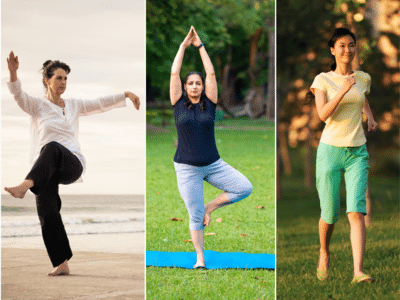Insomnia is no longer just a personal frustration—it’s a global epidemic. According to the latest research, about 16.2% of the world’s population struggles with insomnia, and nearly 8% face its more severe form. In the United States alone, a study by the Centers for Disease Control and Prevention revealed that 14.5% of adults recently had trouble falling or staying asleep.
While cognitive behavioral therapy for insomnia (CBT-i) remains the gold standard in treatment, it’s not always accessible to everyone. It often involves multiple sessions with trained therapists—time-consuming and sometimes costly. For those seeking a more approachable solution, movement may be the medicine.
Simple Steps Toward Sound Sleep
A new meta-analysis reviewed studies exploring how physical activity can impact sleep and found that yoga, Tai Chi, walking, and jogging were powerful allies against insomnia.
This research was first reported by Medical News Today, which highlighted expert insights into why these activities might be so effective. Dr. Leah Kaylor, a clinical psychologist specializing in trauma and sleep, explained that exercise may help deactivate the sympathetic nervous system—the body’s fight-or-flight response—and increase parasympathetic activity, the calming “rest-and-digest” mode essential for sleep.

Why Are We So Tired?
Modern life, it seems, is working against our need for sleep. High-pressure careers, non-stop digital stimulation, emotional stress, and even the constant glow of artificial light are all contributors to chronic sleeplessness. Kaylor and neuroscientist Dr. Jonathan Cedernaes both noted that even worrying about sleep itself can spiral into deeper insomnia, especially for those already struggling with anxiety or depression.
But this is where gentle movement can offer something deeper than just physical benefit. It provides rhythm, predictability, and calm—qualities often missing in a racing mind. Breath-led activities like yoga and Tai Chi, for instance, can regulate cortisol and improve vagal tone, leaving the body more ready to rest.
While cognitive behavioral therapy for insomnia (CBT-i) remains the gold standard in treatment, it’s not always accessible to everyone. It often involves multiple sessions with trained therapists—time-consuming and sometimes costly. For those seeking a more approachable solution, movement may be the medicine.
Simple Steps Toward Sound Sleep
A new meta-analysis reviewed studies exploring how physical activity can impact sleep and found that yoga, Tai Chi, walking, and jogging were powerful allies against insomnia.
- Yoga, known for its gentle stretches and mindful breathing, was shown to increase sleep time by nearly two hours and improve sleep efficiency by 15%.
- Tai Chi, a slow, meditative martial art with its origins from China, not only improved sleep quality scores but also had long-lasting effects that lasted up to two years, according to the study.
- Walking and jogging also showed promising results. These simple aerobic activities led to a significant drop in insomnia severity, reducing stress and helping the body reset its internal clock.
This research was first reported by Medical News Today, which highlighted expert insights into why these activities might be so effective. Dr. Leah Kaylor, a clinical psychologist specializing in trauma and sleep, explained that exercise may help deactivate the sympathetic nervous system—the body’s fight-or-flight response—and increase parasympathetic activity, the calming “rest-and-digest” mode essential for sleep.
Why Are We So Tired?
Modern life, it seems, is working against our need for sleep. High-pressure careers, non-stop digital stimulation, emotional stress, and even the constant glow of artificial light are all contributors to chronic sleeplessness. Kaylor and neuroscientist Dr. Jonathan Cedernaes both noted that even worrying about sleep itself can spiral into deeper insomnia, especially for those already struggling with anxiety or depression.
But this is where gentle movement can offer something deeper than just physical benefit. It provides rhythm, predictability, and calm—qualities often missing in a racing mind. Breath-led activities like yoga and Tai Chi, for instance, can regulate cortisol and improve vagal tone, leaving the body more ready to rest.
You may also like

China's Shi Yuqi, Korea's An Se-young win titles at badminton Japan Open

CoinDCX hacked, $44 million lost in security breach

18-hour days, 1 week off: Sheikh Mohamed's relentless commitment to nation and people

J&K L-G reviews arrangements for Amarnath Yatra at Baltal

England confirm instant action for next Euro 2025 match as star suffers racial abuse






